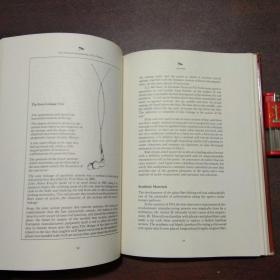Content:
Fishing, an ancient pastime that has stood the test of time, requires not only patience but also a keen understanding of the rhythm of the water. Mastering the art of fishing involves much more than just casting a line into the water and waiting for a bite. One of the most crucial aspects of fishing is understanding and mastering the rhythm or pace of the fishing experience. This article will delve into the techniques and strategies that can help you grasp the perfect fishing rhythm.
Understand the fish's behavior

To master the fishing rhythm, it is essential to understand the behavior of the fish you are targeting. Different species of fish have different feeding patterns and preferences. By studying the habits of the fish you are after, you can adjust your approach accordingly. For instance, some fish are more active during dawn and dusk, while others are more likely to feed during midday. Knowing this information will help you choose the right time to fish and adjust your tactics.
Pay attention to the water conditions
Water conditions play a significant role in the fishing rhythm. Factors such as water temperature, clarity, and flow can affect the fish's behavior and feeding patterns. For example, during hot summer days, fish may seek cooler water, which can be found in deeper or shaded areas. By understanding and adapting to these conditions, you can improve your chances of catching fish.
Choose the right bait and lure
The type of bait or lure you use can greatly impact the fishing rhythm. Different baits and lures attract different species of fish, and some may work better in certain conditions than others. Experiment with various baits and lures to find what works best for the fish you are targeting. Additionally, consider the size, color, and action of the bait or lure, as these factors can also influence the fishing rhythm.
Adjust your retrieve pace
The pace at which you retrieve your bait or lure is a critical element in mastering the fishing rhythm. A slow retrieve may be more effective for certain fish, while a faster retrieve may work better for others. Observe the fish's behavior and adjust your retrieve pace accordingly. If you notice fish following your bait but not biting, try slowing down or speeding up your retrieve to see if it triggers a strike.
Use the right rod and reel
The equipment you use can also affect the fishing rhythm. A lightweight rod and reel may be more suitable for finesse techniques, while a heavier setup may be better for casting heavier lures or tackling larger fish. Choose the right rod and reel for the type of fishing you are doing and the species of fish you are targeting.
Be patient and observant
Fishing is a patient sport, and mastering the rhythm requires a keen eye and a willingness to wait. Don't get discouraged if you don't catch fish right away. Instead, take the time to observe the water and the fish's behavior. This will help you understand the rhythm and make adjustments as needed.
Practice and refine your techniques
Like any skill, mastering the fishing rhythm takes practice. Spend time on the water, experimenting with different techniques and strategies. Over time, you will develop a sense of the rhythm and become more successful in your fishing endeavors.
In conclusion, mastering the fishing rhythm involves understanding the behavior of the fish, adapting to water conditions, using the right bait and lure, adjusting your retrieve pace, choosing the right equipment, being patient and observant, and practicing your techniques. By following these tips and strategies, you will be well on your way to becoming a skilled angler who can grasp the perfect fishing rhythm.












